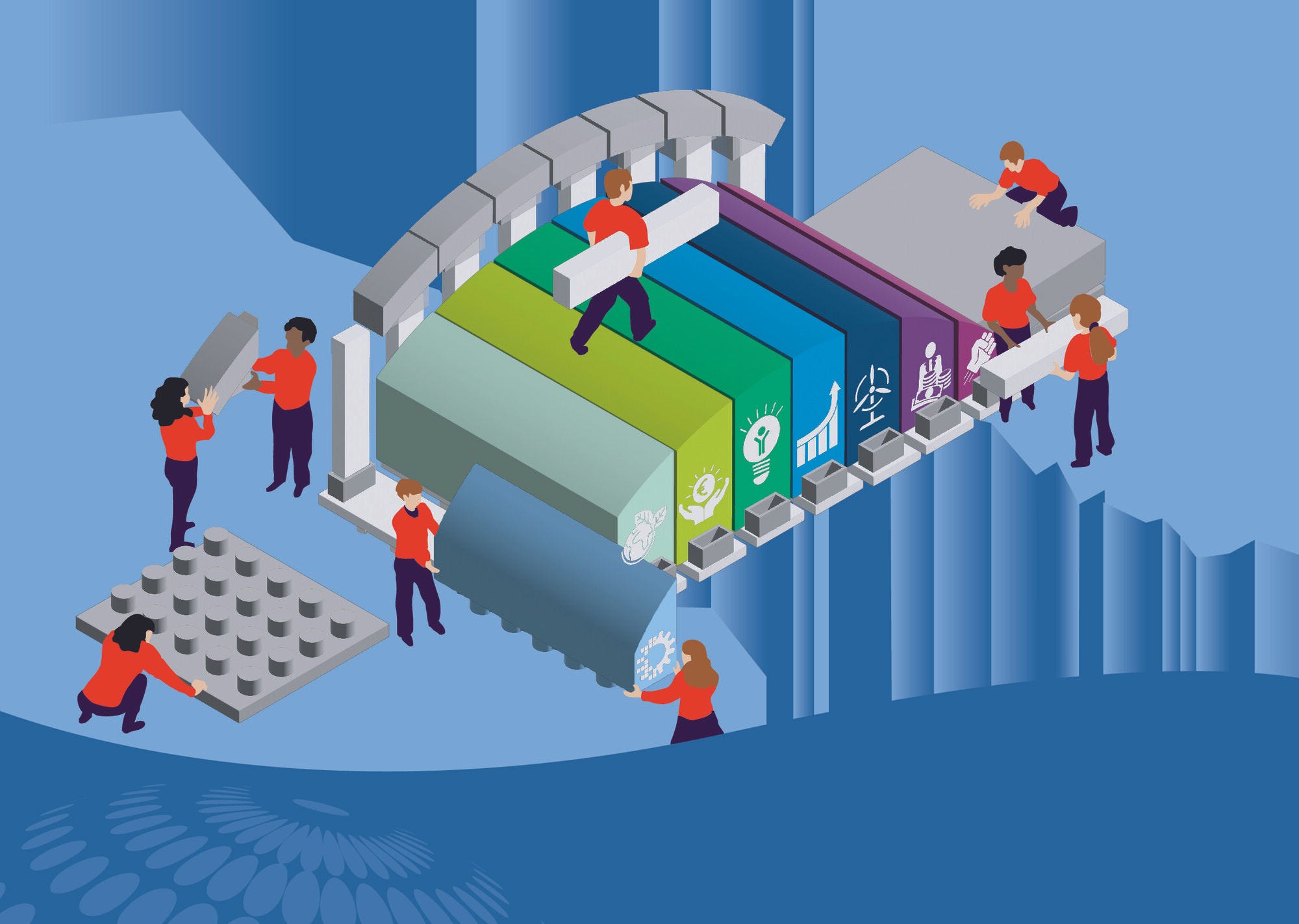Over the past few years, the global economy has suffered profound shocks that have had a marked impact on small and medium-sized enterprises (SMEs) and entrepreneurs. While government support protected SMEs from the economic impact of the COVID-19 pandemic, new threats have emerged. Rising geopolitical tensions and global financial risks, high inflation, tightening monetary and fiscal policies, labour shortages, high trade barriers and slowing integration into global value chains all contribute to a more challenging business environment for SMEs. Meanwhile, there is an urgent need to accelerate the contribution of SMEs and entrepreneurship to the green and digital transitions and help them navigate a changing international trade and investment landscape. Against this background, the OECD SME and Entrepreneurship Outlook 2023 provides new evidence on recent trends in SME performance, changing business conditions, and policy implications. It reflects on the broad underlying theme of SME integration into a series of networks, including global production and supply-chain networks and the role of women led-businesses in international trade, knowledge and innovation networks, and skill ecosystems, as well as the main policies in place to ensure SMEs can integrate these networks and benefit from the ongoing transformations they go through. The report also contains statistical country profiles that benchmark the 38 OECD across a set of indicators.
OECD SME and Entrepreneurship Outlook 2023

Abstract
Executive Summary
Small and medium-sized enterprises (SMEs) and entrepreneurs have been greatly impacted by the COVID-19 pandemic and the fallout from Russia’s large-scale aggression against Ukraine, putting millions of jobs and businesses at risk. While most SMEs have little direct exposure to Russia and Ukraine, they have been affected by rising geo-political tensions, high inflation, tighter monetary and fiscal policy, and supply-chain disruptions. Since the start of the war, firm entries have also been growing at a much slower pace, in part reflecting the relatively high growth rates observed in countries as they recovered from the pandemic shock. At the same time, firm exits have risen substantially, as firms had to cope with the ensuing energy crisis and the withdrawal of fiscal support. Trends in bankruptcies have been accelerating in several European countries, and although they continued to fall in the United States in 2022, they have risen in the most recent period. Tight labour markets have also accentuated inflationary pressures, as well as access to skilled labour, compounding difficulties for small firms.
SMEs engaged in global value chains (GVCs) tend to be more productive, have higher revenue, and obtain access to more diversified products and services. While GVC disruptions have abated recently, SMEs have faced disproportionate challenges in adapting to shifts in the trade environment. In 2021, delays in receiving supplies and increased shipping costs were the most common supply-chain difficulties reported by SMEs. At the same time, long-standing vulnerabilities and an increased focus on strategic products and national self-reliance are also impacting on the international trade system, together with growing pressure to enhance sustainability and due diligence across global production systems. In addition, rising cybersecurity risks have made exposure and risk management capacity key factors in partnership decisions, which may weaken the ability of SMEs that are unprepared to meet certain standards to export successfully, as well as to integrate, partner and build stronger linkages with multinationals across changing supply chains.
Among the many challenges in this regard, increasing export activity among women-led firms should not be overlooked. In 2022, only 11% of women-led SMEs exported, compared to 19% of men-led firms. Even when discounting the gender-biases that often result in women-led firms being smaller and more likely to produce services, which are less traded than goods, and which, in part, explain lower female participation rates, gender-based challenges directly related to trade, including unconscious (and sometimes conscious) bias and societal norms remain. Easing procedures and reducing delays at borders, in particular through digital tools, would therefore especially benefit women-led firms. As governments are working to close gender gaps in exporting through targeted programmes, e.g. for accessing (trade) finance or by prioritising sectors in which women work and own businesses for improving market access in trading partner countries, it will be important to monitor their success, including by developing more gender-differentiated data on engagement in international trade.
Looking forward, the twin transition is expected to continue to alter the way firms operate and force a rethink of industrial systems, business models and digital preparedness. Open innovation practices have continued to spread, including through increased use of digital platforms by small firms to access and drive innovation. In 2021, the use of social media had become broadly mainstreamed, with uptake by over 60% of the total business population, and the share of SMEs using cloud computing services doubled in less than six years. However, many small firms continue to lack the skills needed to fully leverage on the potential of digital technologies, increasing the risks of deepening digital gaps. According to the March 2022 Future of Business Survey, the most prevalent challenges reported by small firms, and in particular micro firms, were a lack of technical skills and knowledge. This is true across all sectors, but particularly acute in manufacturing. In addition, while small businesses have significant potential to drive and benefit from the green transition, not least because they contribute to over one-third of industrial greenhouse gas (GHG) emissions and are important drivers of green innovations, fewer SMEs have taken steps to improve their environmental performance as compared to large firms.
Attracting and retaining staff has emerged as a major constraint to production for businesses across OECD countries. Against a background of tight labour markets, the green and digital transitions are also changing skill demands for a broad range of jobs across the economy, and competition for skills is amplifying traditional challenges faced by SMEs in accessing and developing talent. Heightened labour shortages were one of the most pressing challenges reported by SMEs in 2022. Yet, access to skills is critical for SMEs to adapt to rapid changes in economies, where value creation increasingly hinges on human capital and intangible assets. SMEs will therefore have to strengthen efforts to close skills gaps, retain trained and skilled staff, as well as upgrade transversal skills, including technical and managerial skills, to drive innovation, make the most of digitalisation and invest in decarbonisation. Governments have a strong role to play too, through support that raises awareness on skill needs, reduces training costs for SMEs and promotes workplace training, including through tax incentives and subsidies (e.g., vouchers). Tailored policy strategies with a spatial lens are also increasingly being deployed to leverage on local skills ecosystems composed of public and private stakeholders, including research and education organisations.
In this context of multiple and compounding challenges and transformations, networks represent strategic assets to improve SME access to finance, digital solutions, data and skills, to capture and leverage on knowledge spillovers, and achieve external economies of scale. They can also represent a source of resilience to better manage uncertainty and disruptions, and governments are actively leveraging on them. An analysis of over 600 policy initiatives across OECD countries identified close to 400 policies that target stronger SME integration into production/ supply chain networks and nearly 300 policies target their integration into (global) knowledge and innovation networks. Another set of policies, though less frequently used but with significant potential, target the development of strategic partnerships to link SMEs with business partners through contractual agreements, joint ventures, or consortia, and to support SME integration into clusters, with strong specialisation and spatial concentration features.
In the same series
Related publications
-
13 September 2024








